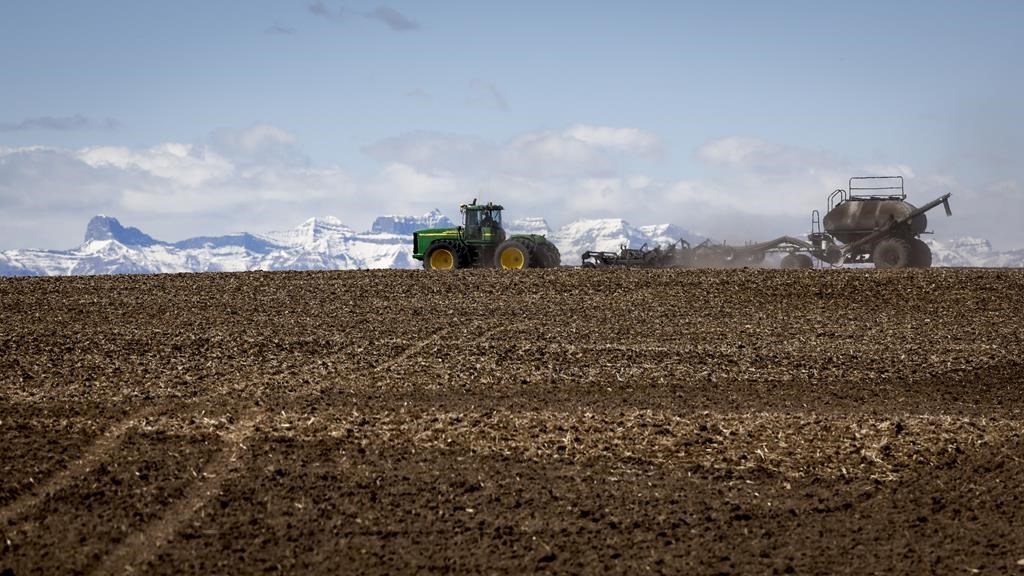Prairie farmers hope for ‘normal’ season after volatile couple of years

Posted Apr 17, 2023 1:11 pm.
Third-generation farmer Greg Sears is more than ready for a crop year without any curve balls in it.
In 2021, farmers were thrown a big one in the form of the severe drought that withered crops across Western Canada, including on Sears’ farm just north of Grande Prairie.
Then last year — even as the war in Ukraine drove grain and oilseed prices to record highs — inflationary pressures led to dramatic spikes in the cost of everything from fertilizer to fuel to tractor tires, leading some in the industry to dub 2022 as the most expensive crop year in history.
“Roller coaster ride, is a good way to describe it,” said Sears, of the volatility that has affected Canadian agriculture in the last 24 months.
“I’m kind of hoping (2023) will be, for what it amounts to, a normal year.”
Sears made the comments in a recent interview from his farm, where the weather has only recently changed to what he describes as “spring-ish” conditions.
‘Nervous anticipation’ for season
While it will likely still be a few weeks before his fields dry up enough to start seeding his wheat, barley and canola, Sears said he feels a mix of hope and “nervous anticipation.”
On one hand, crop prices remain high from a historical perspective — though not as high as last year — and Canadian farmers are eager to meet the growing global demand for food.
“Most indications suggest farmers are going to hit the fields hard this year, with planted acreage expected to be a near record,” Edward Jones analyst Steve Hansen wrote in a recent research note, in which he suggested that if everything goes well, Canadian farmers could deliver a “Top 5 harvest” this fall.
But the memory of 2021’s record-breaking heat and drought in Western Canada weighs on many farmers who experienced it.
“We used to have a certain expectation for what our worst-case scenario was, and 2021 really reset that limit,” Sears said.
“We were affected as much as anybody. It wasn’t a very good scene for most people in our area.”
Multiple years of dry weather, inflation an issue
While 2021 was the worst one, western farmers have suffered through multiple drier-than-average growing seasons in the past decade.
And as of the end of February, Agriculture and Agri-Food Canada’s drought monitor map shows vast swathes of B.C., Alberta and Saskatchewan as being “abnormally dry” or already in a drought condition.
That’s a worry, Sears said.
“We haven’t really had good solid rains to build up the subsoil moisture again,” he added.
“And we didn’t get the big, big snows that we typically get in February or March. It was pretty sparse.”
Another concern is inflation, which Farm Credit Canada chief economist J.P Gervais said could impact farm profitability this year. While fertilizer and diesel costs have come down somewhat from last year, they remain historically high. And interest rates are much higher than they were at this point in 2022, which will be an issue for some farmers.
“The financial health of some operations depends on ‘do you own your land, and how much interest payments do you have to pay on that land?’” Gervais said.
“Certainly a concern for producers is that input costs are going to be very high this year overall,” said Bill Prybylski, who farms near the city of Yorkton in southeast Saskatchewan.
But Prybylski, who is heading into his 41st year of farming, said he believes most producers in his area are optimistic in spite of the risks.
“I think we’re looking at having a pretty start to the crop year here,” he said.
“But obviously, a lot can happen between now and harvest.”








